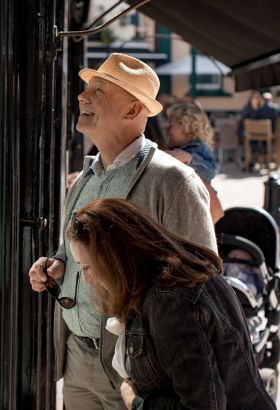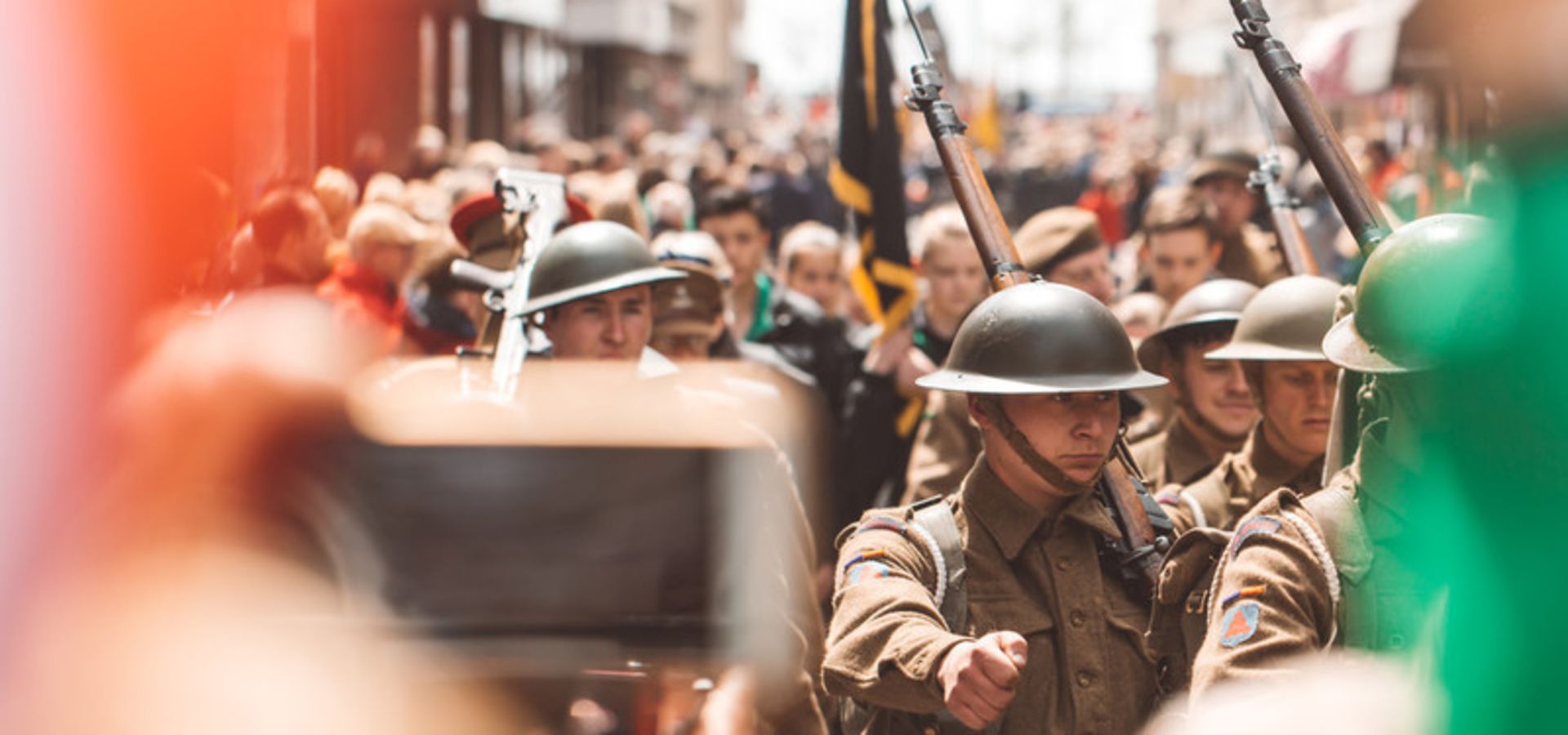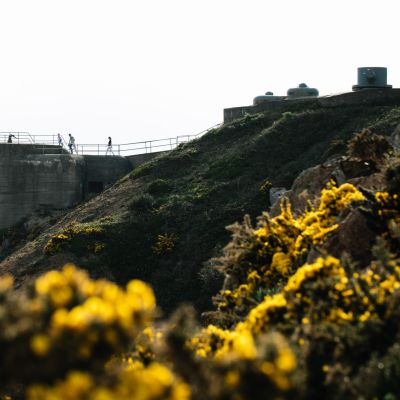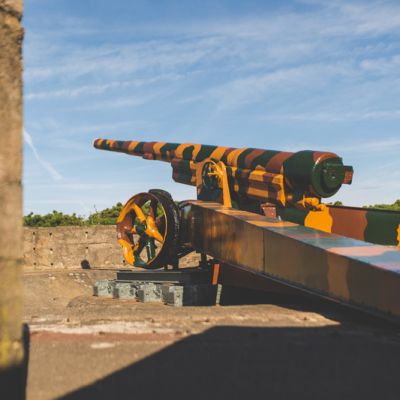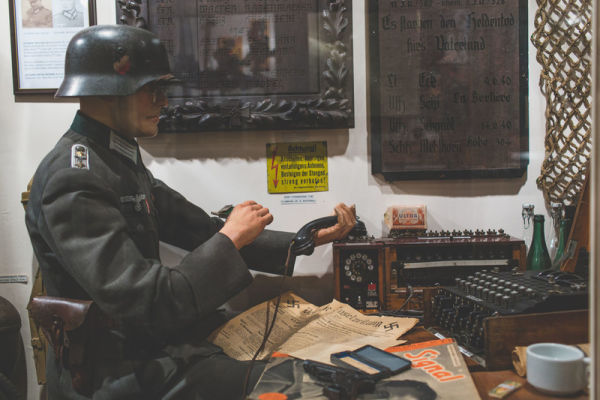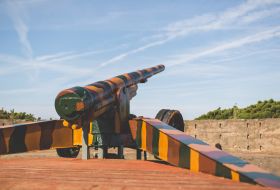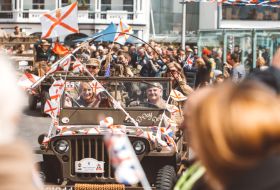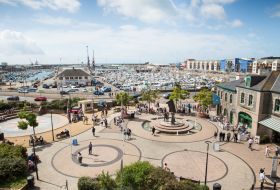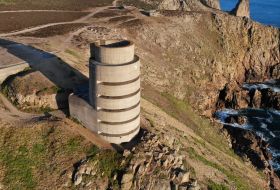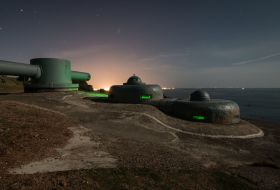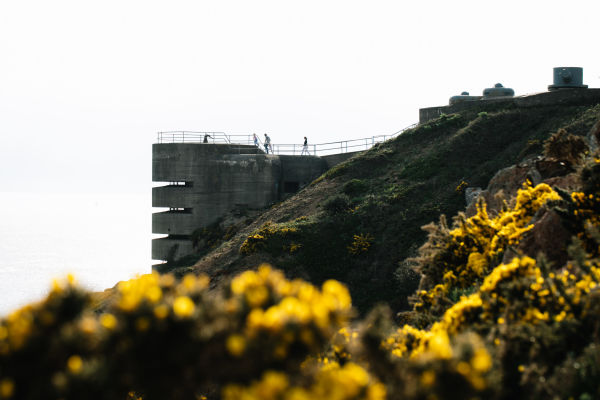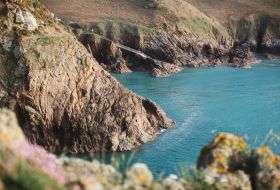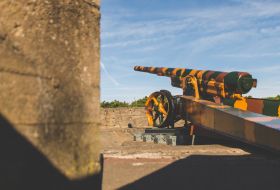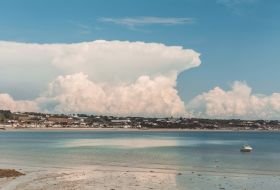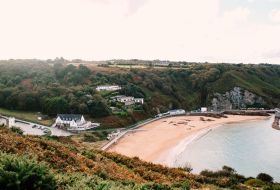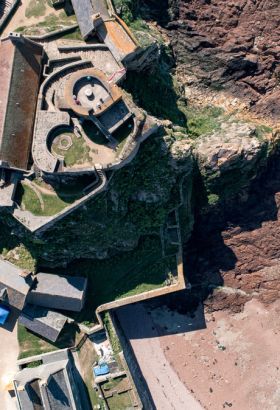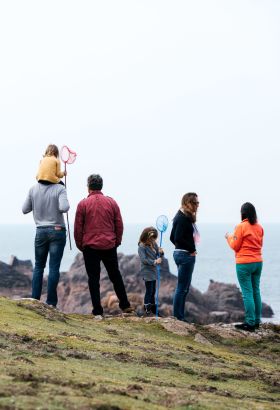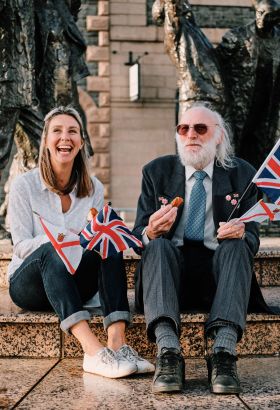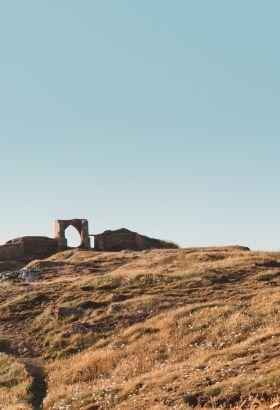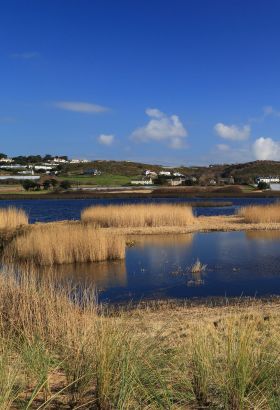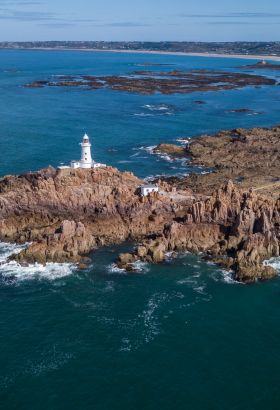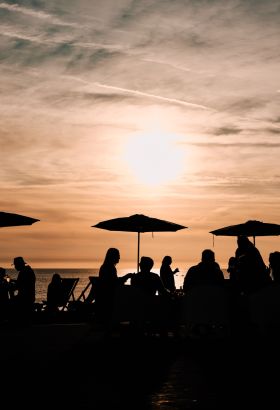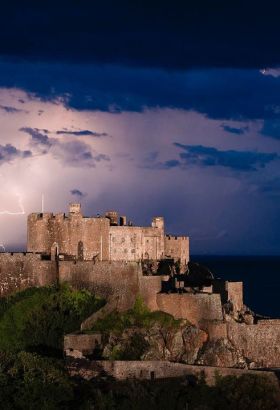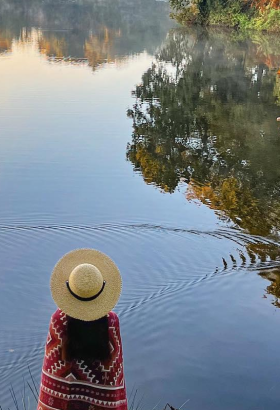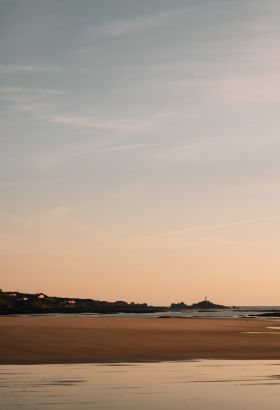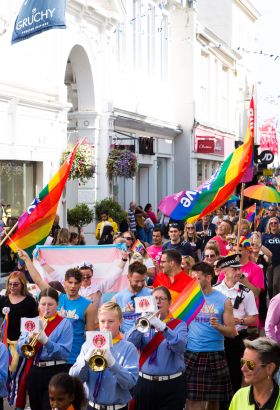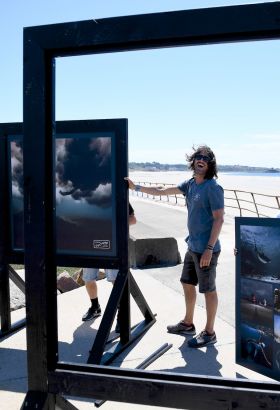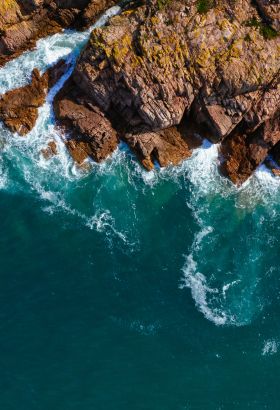The Channel Islands were the only part of the Britain Isles to be occupied by German forces in WW2. The five-year occupation came to an end on 09 May 1945 – Liberation Day, an event still celebrated in Jersey with an annual Bank Holiday.
Life under occupation.
The German Occupation of Jersey began one week after the British government had demilitarized the island fearing for the safety of civilians should there be any conflict. The codename for this was “Operation Green Arrow” (Grüne pfeil) and the initial German Air Force reconnaissance flights mistook civilian farming lorries for troop carriers. On the 28th of June, the German Air Force, not knowing of the demilitarization, bomb and machine gun multiple sites on the island. The attacks kill ten people and wound many more. A few days later on 01 July 1940, General Richthofen, the Commander of the German Air Forces in Normandy, dropped an ultimatum from the air demanding the immediate surrender of the island. White flags and crosses were placed in prominent positions, as stipulated by the Germans, and later that day Jersey was occupied by air-borne troops under the command of Hauptmann Gussek.
German command.
Under the occupying forces, one of the greatest hardships was the lack of news from the mainland after the Germans had outlawed the use of radio sets. A number of individuals risked imprisonment by making their own crystal radio sets and spreading frontline news. Horse drawn traffic became an increasingly regular sight as petrol shortages became severe, and many vehicles were converted to use gas. The price of bicycles rose, and their use was restricted to those connected to essential services. The Germans ordered all traffic to drive on the wrong side of the road. The island was also moved to Central European time. In the months following D-Day, as the Allies regained control of France, the source of supplies fuelling the islands was now no longer available.
Food shortages.
Shopping hours were reduced as goods became scarce. Food shortages on Jersey were finally relieved by the arrival of the Red Cross ship SS Vega, bringing food parcels to Jersey. Before then, substitutes had been used to replace everyday foods, with seawater replacing salt, for instance, and a mixture of parsnip and sugar beet replacing tea. During the autumn of 1944, fuel supplies were almost gone, leaving no gas, occasional electricity, and very little road fuel. Medical supplies were almost non-existent; and most people were without fuel. A Red Cross relief ship, the S S Vega, arrived in Jersey on 30 December with food parcels, and cases of salt, soap and medical supplies. The visits of the Red Cross ship S S Vega proved a lifeline to the starving islanders.

Fortress island.
Hitler ordered the conversion of Jersey into an impregnable fortress. Some 6000 forced workers from countries like Russia, Spain, France, Poland, and Algeria built hundreds of bunkers, anti-tank walls, railway systems, as well as many tunnel complexes. In late 1943 the Tunnel Complex Ho8 (now known as the Jersey War Tunnels) in St. Lawrence was converted from an artillery workshop and barracks to an emergency casualty clearing station able to cope with up to 500 patients. All of the fortifications built around the island were part of Hitler’s “Atlantic Wall”. Today, traces of Jersey’s defences and wartime occupations can be discovered across the island, especially in St. Ouen’s Bay.
Many places on the island hold tales of the forced workers who were brought to Jersey against their will by Organisation Todt. Including courageous stories of escaped slave workers who were taken in and sheltered by islanders. One of the most famous being Feodor Buryi or ‘Russian Bill’ as he was known by Louisa Gould who hid him. Stories are still being uncovered of heroic actions taken by forced workers and locals during the Occupation, like that of Bokejon Akram who kept a diary and has been dubbed as Britain’s Anne Frank. Bokejon was taken in by the Le Breton Family who hid him until the island was liberated in 1945. Uncover stories like this along with many more on the Liberation Route Europe, Forced Workers Trail. You’ll visit memorials, unassuming buildings and haunting landmarks that tell the story of the plight of the forced workers as witnessed by the civilian population and through writings of the workers themselves.
Behind the scenes.
On 06 May 1945, a delegation of German officials met with Jersey’s Bailiff, Alexander Coutanche, and the Attorney-General to discuss the developments in Europe and their impact on the islands. The German Command were defiant and no reference to surrender was entertained. Instead, the Germans portrayed their defeat as a shift in focus towards a union between the powers in a new fight against Russia. As if to illustrate this sentiment, the German Commander of the Channel Islands, Vice-Admiral Huffmeier, responded to the British Army’s request for capitulation by stating that he only received orders from his ‘own Government’. Despite the nonchalance of the German occupying forces, which were still officially recognised, Jersey’s preparations for liberation began to take noticeable shape. In June 1944, the Normandy landings marked the initiation of ‘Operation Overlord’, the invasion of northwest Europe by the Allied forces.

Victory on the horizon.
By 07 May 1945, the German army had surrendered and the end of the war in Europe was announced. During the week leading up to 06 May islanders had been hearing reports of Hitler’s fall in Berlin by way of their hidden radios. In spite of the fact that the island was still officially under occupation, rumors began circulating of an imminent end to the war in Europe. On June 1944, the Normandy landings marked the initiation of ‘Operation Overlord’, the invasion of northwest Europe by the Allied forces. Culminating on the 08 May, the Allied military powers had been busy coordinating the necessary steps, behind the scenes, to recover the Channel Islands from their occupation. On 03 May, a British Military operation ‘Nestegg’, with the objective of liberating the Channel Islands, was set in motion when a coordinated group of British Army units, collectively known as ‘Force 135’, were called to ‘Stand To’.
German surrender.
On 08 May the units that made up Force 135 received their orders to move to their marshalling camps in Portsmouth. The main body of the Force was due to arrive in the islands on 12 May, however, a small contingent of Force 135, including their Commander, Brigadier AE Snow, left for the Channel Islands aboard HMS’ Bulldog and Beagle the morning of 08 May. Together with the units of Force 135, this first party consisted of a team of officials responsible for negotiating the terms of the Germans’ surrender. The front page of The Evening Post carried Jersey’s first confirmation of the Allies’ victory in Europe, and islanders were informed that Winston Churchill would broadcast the Nation’s first official announcement that afternoon at 3.00pm. Crowds began to gather at various locations to hear the announcement that would declare their liberation. Islanders waited patiently amidst the heavy air of expectation.

Churchill's speech.
At 15:00 Winston Churchill crackled onto the airwaves to give, perhaps, the most famous speech of his career. The Prime Minister’s words announced the end to the war in Europe and the “unconditional surrender of all German land, sea and air forces in Europe”. When, amidst great cheers across the island, he uttered the words, “our dear Channel Islands are also to be freed today”. Island-wide flags and decorations sprang up. From a balcony overlooking the Royal Square, Bailiff Coutanche gave an impassioned address and proceed with an emotional rendition of the national anthem. Possessions, forbidden under the occupation, miraculously reappeared, adding to the celebrations. Parties continued throughout the rest of the day and long after the King’s speech at 9.00pm, with several bonfire and firework displays taking place.
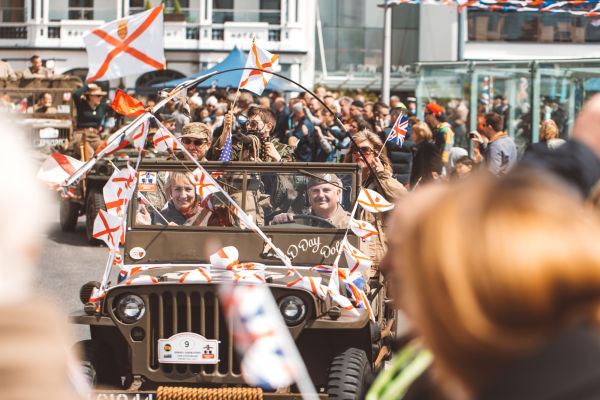
Liberation Day.
At 07:15 on 09 May, on the quarter deck of HMS Bulldog, Second-in-Command for Guernsey General Siegfried Heine signed the Instrument of Surrender on behalf of the German Command of the Channel Islands, effecting their capitulation. On completion of this, General Heine was then ordered to “immediately cause all German flags and ensigns now flying in the Channel Islands to be lowered”. At Midday an overjoyed Bailiff Coutanche accompanied a German delegation led by the island Commander, General Major Rudolf Wulf, aboard HMS Beagle anchored in St. Aubin’s bay, where the separate surrender of Jersey was to take place. Arriving at the same time in St. Helier’s harbour was a small naval inspection party sent to report on the health of the islanders, who were promptly overwhelmed by an enthusiastic crowd delighted at seeing their first liberators landing on Jersey soil.
Trails to uncover the story.
There are many ways for visitors to experience Jersey’s occupation story. Immerse yourself in the sights and sounds of the occupation at the Jersey War Tunnels – you can even arrive by vintage open top bus. For a personal approach, book a tour with Jersey War Tours or History Alive. Their knowledge is only surpassed by their passion. If you prefer to take things at your own pace, then download the free Geotourist app and follow the Liberation Trail, the Occupation Trail. The Forced Workers Trail was created in partnership with Jersey Heritage and Liberation Route Europe to tell the story of slaves brought to the island against their will during the Occupation.
Jersey's Occupation sites.
The Occupation of Jersey during WWII left lasting marks on Jersey’s landscape. Explore the places that tell the island’s wartime story and discover tales of courage, defiance, suffering and resistance.


